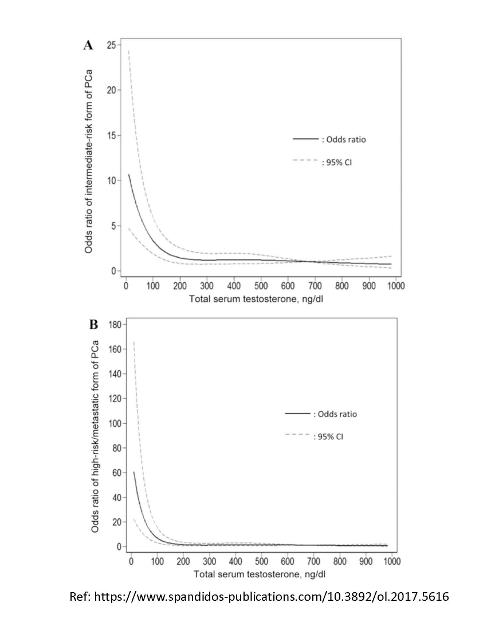Here's a plot showing the Odds Ratio for having either Intermediate Risk PCa or high-risk PCa, as a function of baseline testosterone levels.
The Odds Ratio tells the likelihood of getting PCa, compared to a reference value of 1. So, for example, for the lower plot (high risk), a testosterone level of 100 ng/dl, the Odds Ratio = 7, meaning that a man with 100 ng/dL will be 7 times more likely to get high-risk PCa than a man with a testosterone of 1000 ng/dL.
These plots also show that for hypogonadal men, with T-levels = 50 ng/dL, that the odds ratio can be as high as 22 times more likely to have high-risk PCa than a man with 1000 ng/dL. Yikes !
This relationship impacts older men greater (who naturally have lower levels of testosterone) than younger men.
